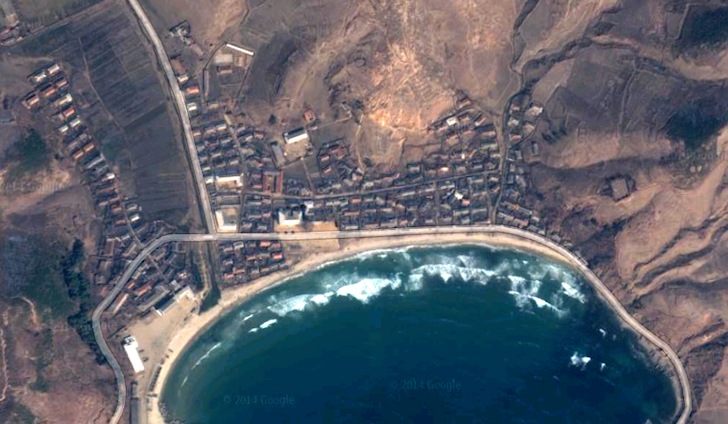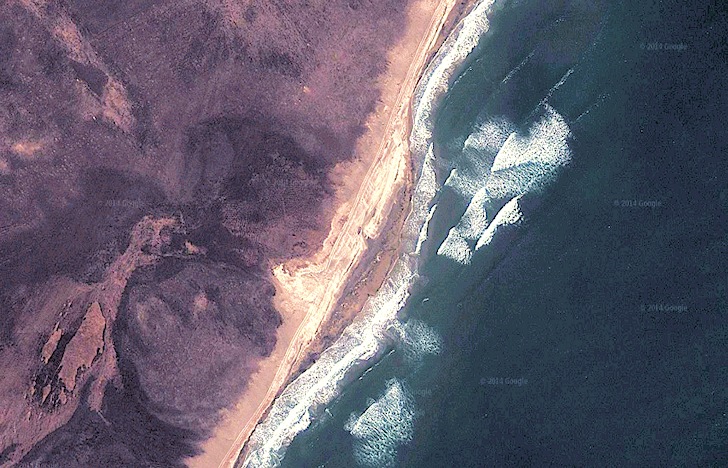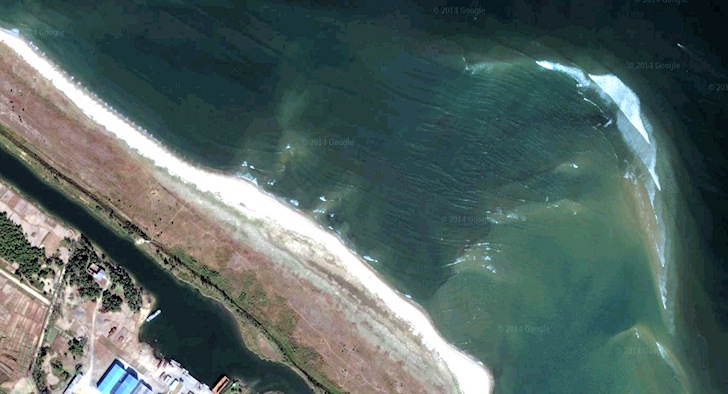North Korea, the world's most secretive country, has plenty of secret surf spots to discover. But, will it be possible to ride waves in the land of Kim Il-sung, the eternal president?
The Democratic People's Republic of Korea, the official name of North Korea, offers 2,495 kilometers (1,550 miles) of coastline, with the East China Sea and the Sea of Japan on the Western and Eastern coasts.
If you had the opportunity to surf waves in North Korea, you'd rather head for the East Sea (known in the Western world as the Sea of Japan) coast because the local sea currents circulate in a counterclockwise direction, clearly hitting the exposed coast.
From Hamhung up north to Sonbong, there are plenty of surf regions to explore.
The coastline is dominated by small fishing villages, industrial complexes, jetties, endless dunes, and white sand beaches.

An Unexplored Surfing Paradise
Spots primarily exposed to North/Northeast swells have better chances of delivering perfect waves for surfing. Jungho, Pungeo, Gangsangni, Sinchang, Geonja, Iwon, Tanchon, Ilsin, and Rajin are some of the names of the local train stations where you should stop to check the surf.
In Kimchaek, near a local river mouth, we've discovered a perfect A-frame wave, breathing an open swell and surrounded by mountains.
This wave could easily be named the Asian Trestles. Curiously, trains travel very often close to the North Korean shore.
On our way to the Chinese frontier, we've found a long beach near the Man's Lagoon with a strong potential for wave riding - nearly two kilometers of empty and unexplored surf and green fields as background scenarios.
Meet Sonbong, which is probably the best surf spot in North Korea.
The opposite Southwest coast offers pristine, natural, crystal-clear waters and desert islands.
The Ongjin region has multiple river mouths and may be an excellent alternative for surfers on North Korea's East China Sea coastal shores.
North Korea is an unexplored surfing paradise. Really. With a long and sharp coastline, it gets regular swells, at least on the Eastern coast.
The problem is that only between 3,000 to 4,000 Western tourists visit North Korea each year.

Beaches Controlled by the Military
NGO workers have already tried to surf in North Korea. It is not easy, and they told us why.
"First, the coast is 99 controlled by the military, and they are always prepared for an invasion from the sea," a source tells SurferToday.com.
"This means that even if a traveler might luck out and hit a swell, even if it is going off in a specific location, if that location is not specified as a public entry, there is absolutely no way they will be allowed to get in the water let alone even go near the beach."
"We experienced this first-hand in 2012 when passing a cove that was glassy and looked pretty dang rideable."
"We asked if the tour guides would stop and let us check it out, and they flatly said that in no way was it possible as the military controlled the beach."
"Military trumps tour bus in all cases! I was there during a typhoon swell, and it was going off all over the place."
"Yet even if I would have had gear, there was no access allowed."
"Where you are allowed to enter the water, it is in a very specific beach access location."
You pull up to a beach, and they show you the boundaries of 100 to 300 yards of area where you can go in."
"Even if the surf might be working way down the beach, as far as access goes, the specified location you are in is it."
"Tour guides are expected to check in with their home office at specific times as they both leave and arrive at designated locations."
"So, even if the surf is working, the bus or train might leave, and you want to be on it."
In this uncrowded land, you may be the first to catch waves and make history. North Korea is the ultimate surfing destination of the 21st century.
